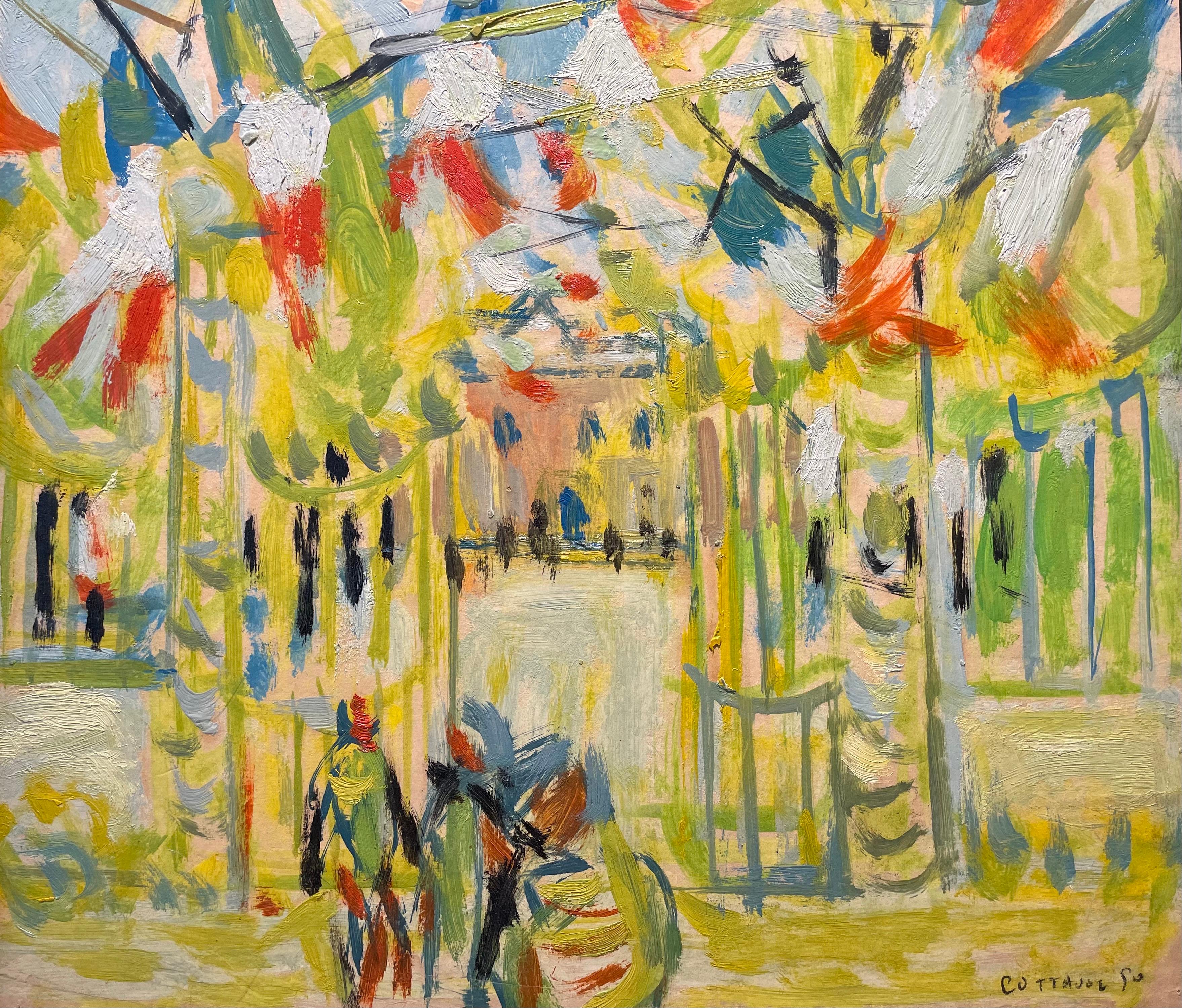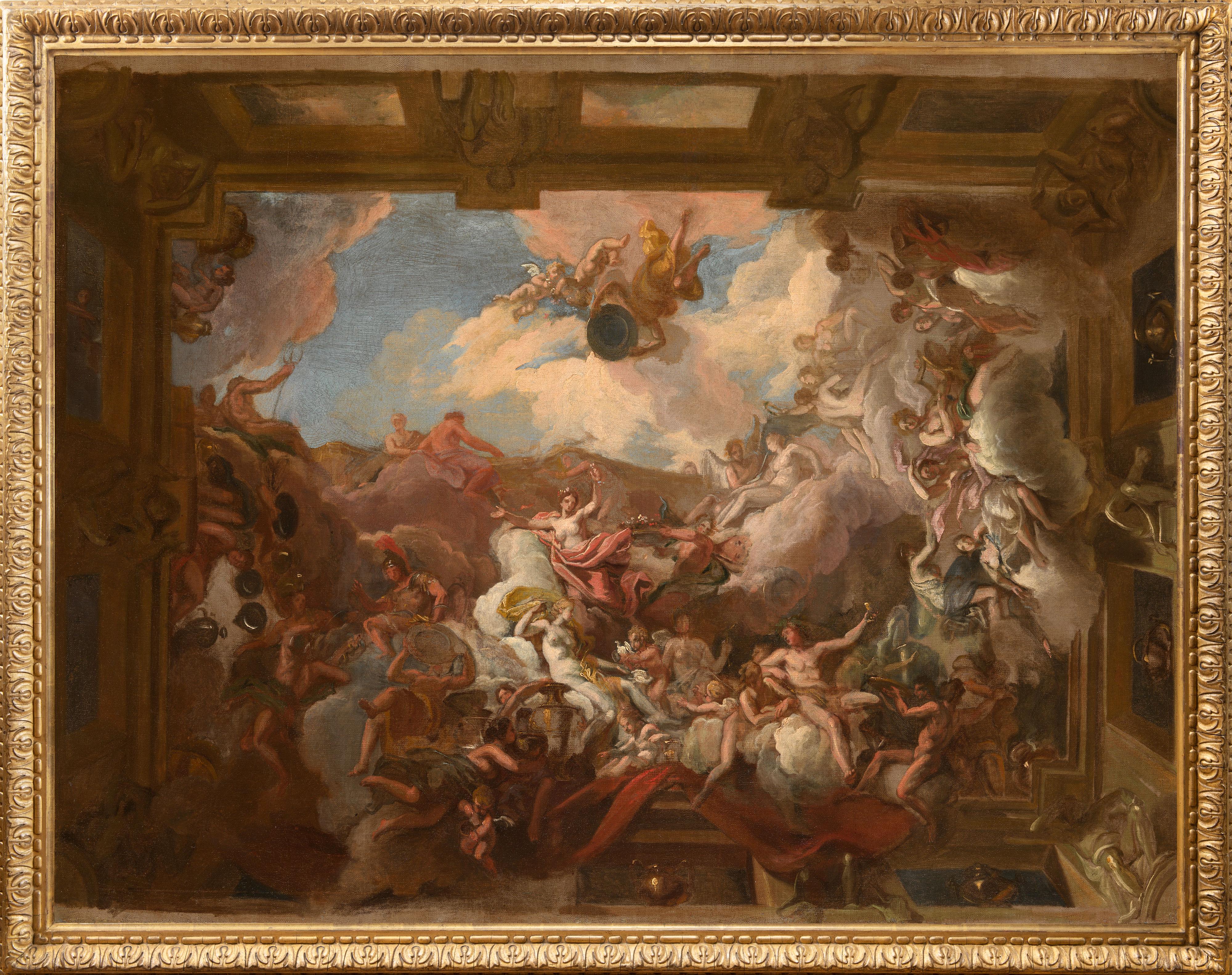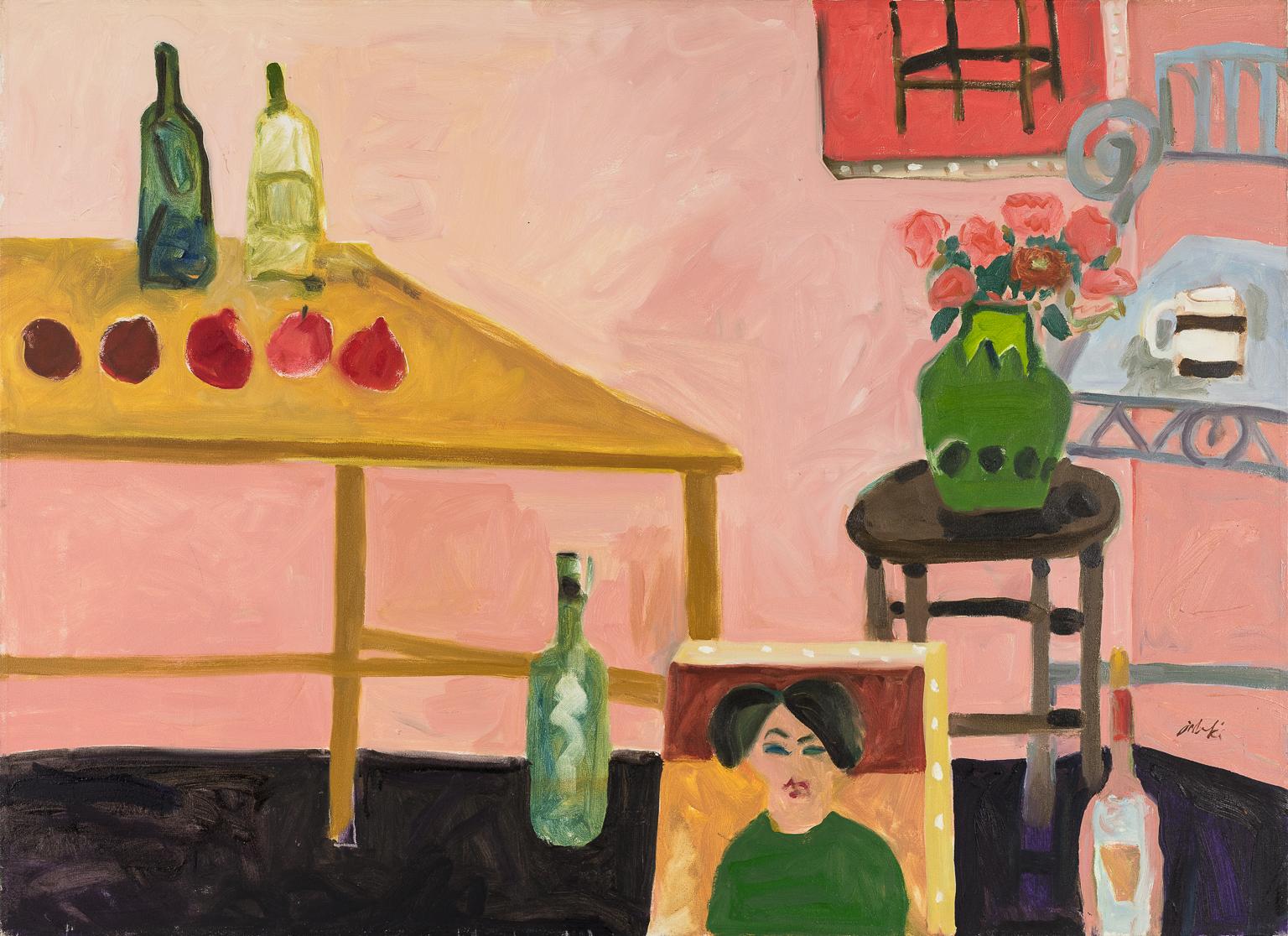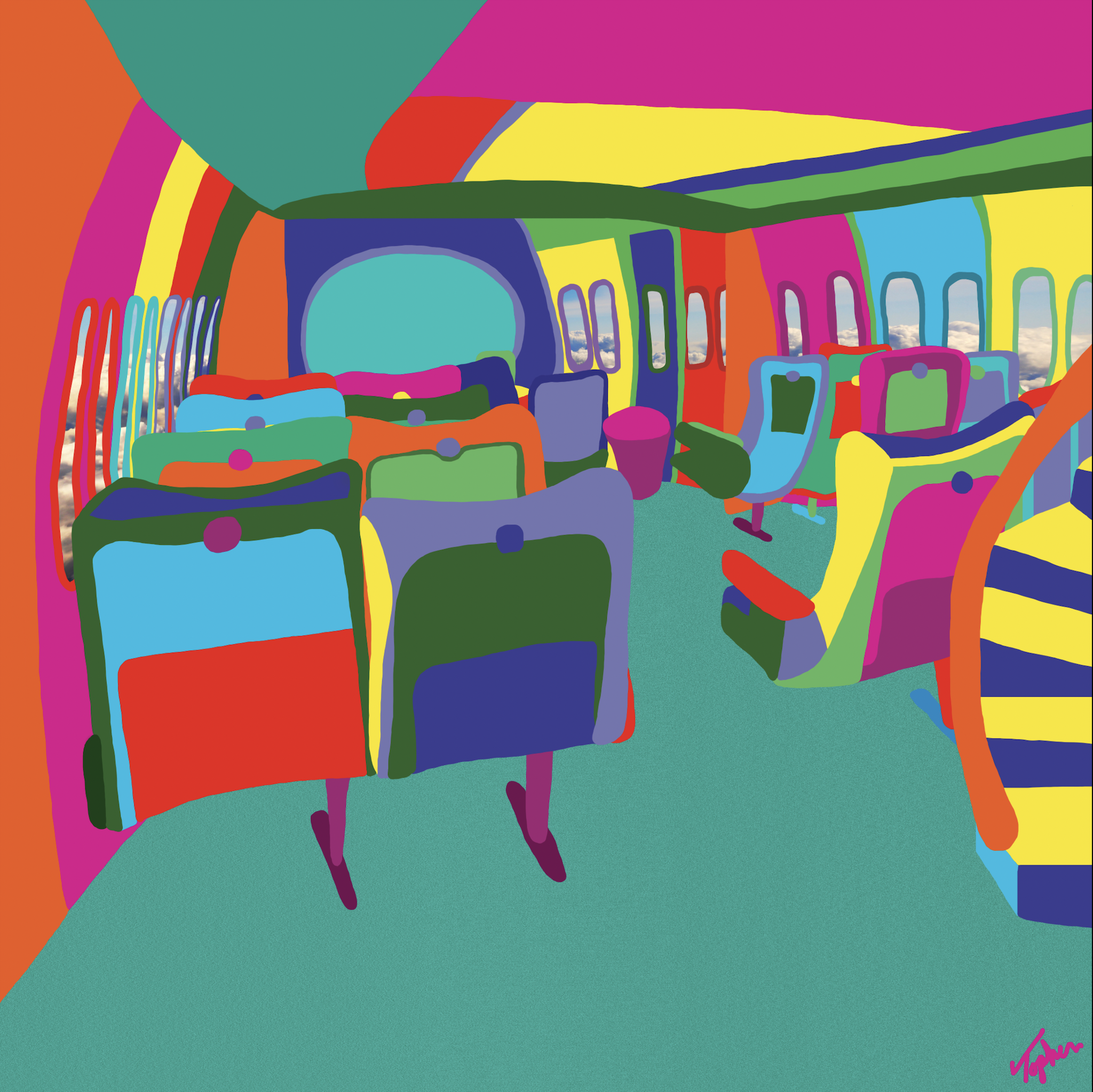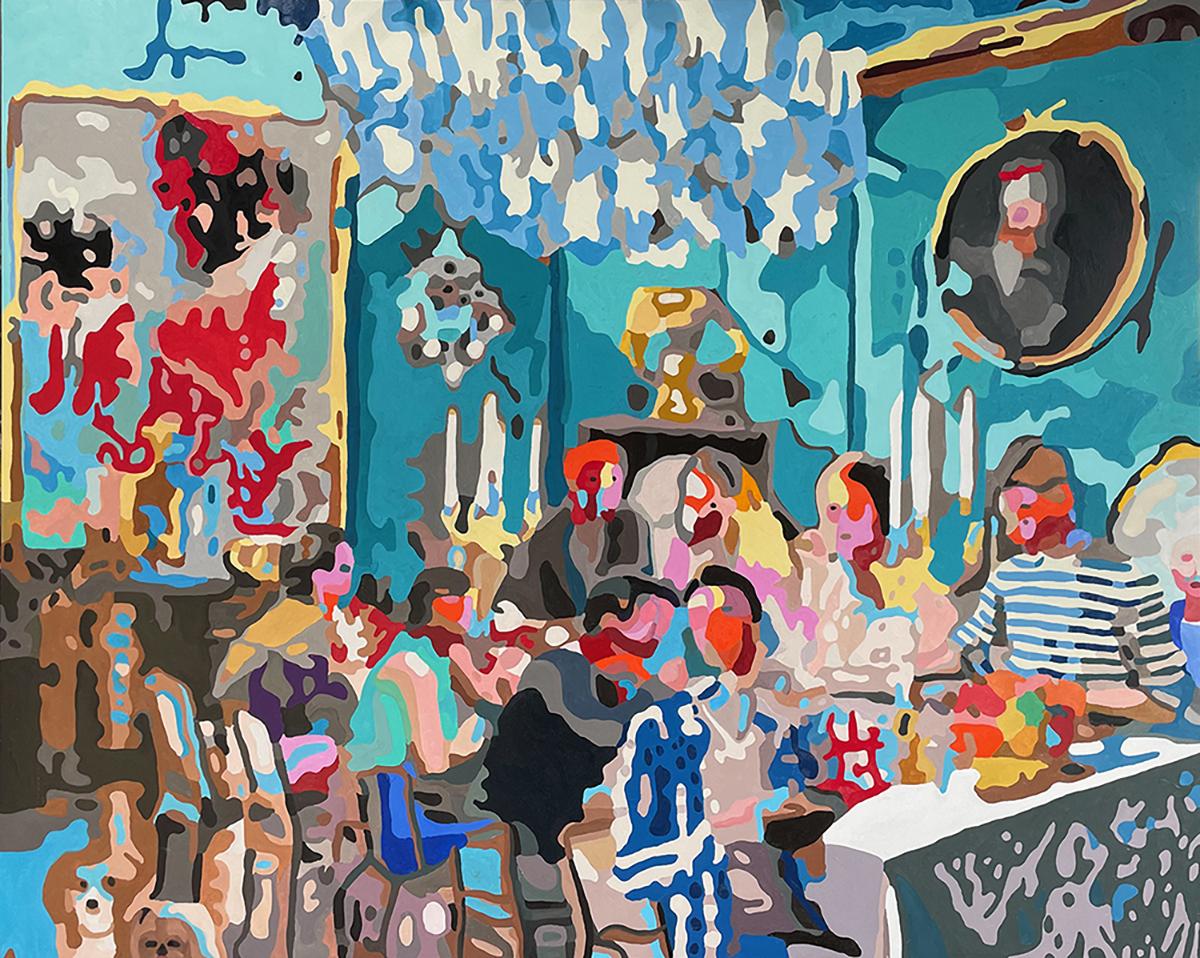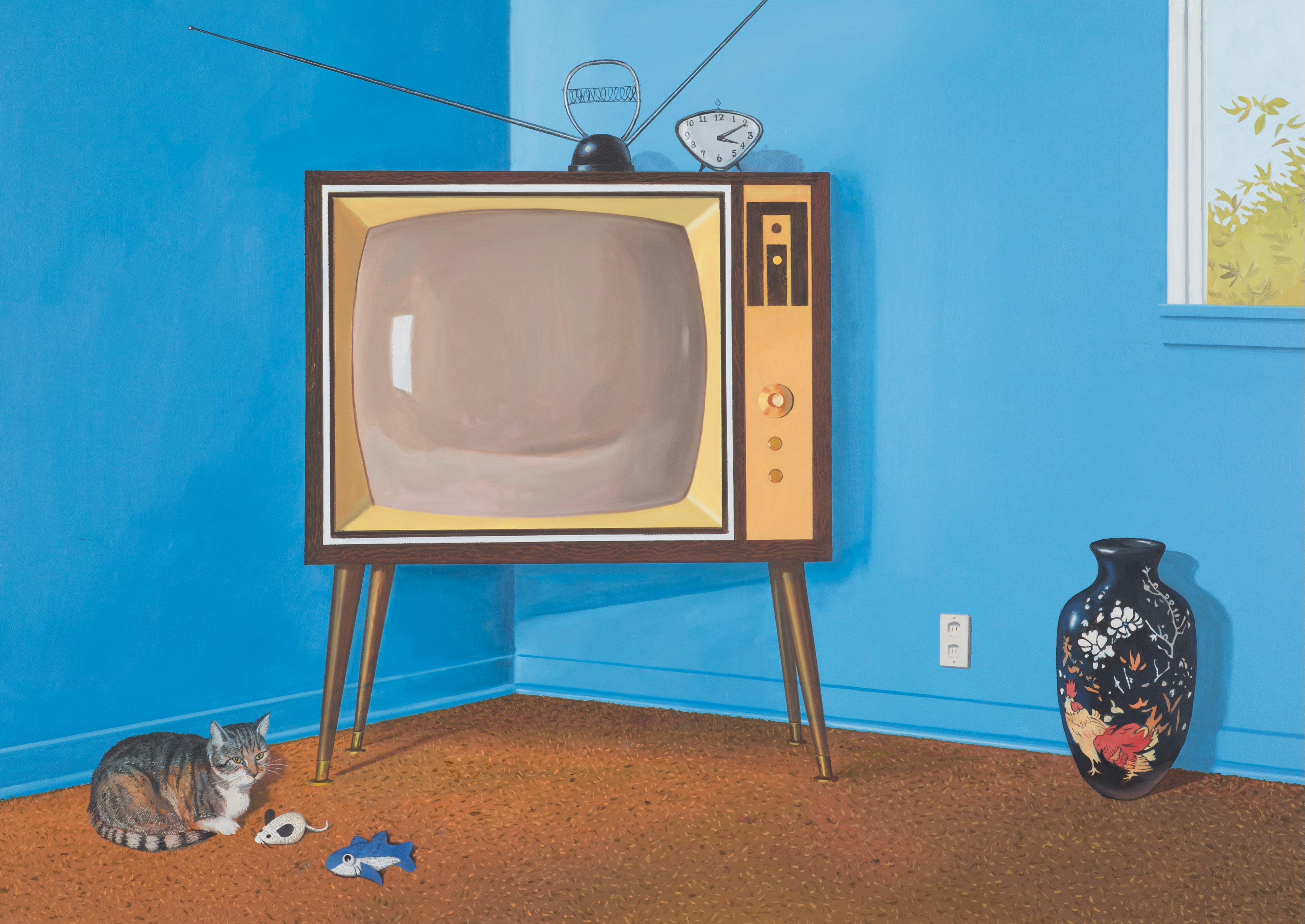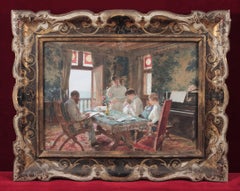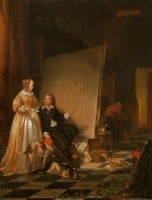
The Studio of Paulus Potter
View Similar Items
Want more images or videos?
Request additional images or videos from the seller
1 of 5
Johannes Christoffel VaarbergThe Studio of Paulus Potter1857
1857
About the Item
- Creator:Johannes Christoffel Vaarberg (1825-1871, Dutch)
- Creation Year:1857
- Dimensions:Height: 21 in (53.34 cm)Width: 16 in (40.64 cm)
- Condition:Excellent.
- Gallery Location:New York, NY
- Reference Number:1stDibs: G13121010284

About the Seller
5.0
Recognized Seller
These prestigious sellers are industry leaders and represent the highest echelon for item quality and design.
Established in 1997
1stDibs seller since 2012
17 sales on 1stDibs
Typical response time: 11 hours
More From This SellerView All
- Joseph and Potiphar's WifeLocated in New York, NYProvenance: Palazzo Pisani at San Stefano, Venice Mrs. F. Craighead (possibly Mrs. Fay Stinson Craighead, Evansville, Indiana) Sale, Sotheby Parke Bernet, New York, 7 June 1978, lot 310, as Bonifazio Veronese Daniel M. Friedenberg, New York, until 2011; and by descent to: Russell Friedenberg, until 2014 Literature: Giuseppe Pavanello, Gli Inventari di Pietro Edwards nella Biblioteca del Seminario Patriarcale di Venezia, Venice 2006, pp. 132, 140, as no. 10 in Pietro Edwards’ inventory of the Palazzo Pisani: “Giuseppe che fugge dalla moglie di Pitifarre” by Bonifacio Veronese. Philip Cottrell and Peter Humfrey, Bonifacio de’ Pitati, (forthcoming), cat. no. 166h. Antonio Palma is the least well-known member of the illustrious Palma family of Venetian painters of the 16th century. He was the nephew of Jacopo Palma—Palma il Vecchio—and upon his uncle’s death in 1528, he began to work with Palma Vecchio’s principal student and the inheritor of the elder artist’s studio, Bonifazio de’ Pitati (Bonifazio Veronese). Antonio worked with Bonifazio as his principal assistant and right-hand man until Bonifazio’s death in 1553, after which he continued his independent career. He married a niece of his master, and their second son, Jacopo, born in 1648, would achieve fame as Palma il Giovane...Category
16th Century Renaissance Figurative Paintings
MaterialsOil, Canvas
- Leisure Moments (Interior Scene)By Julius SchmidLocated in New York, NYCharming watercolor of an intimate family scene in beautiful painted period frame. Signed in the lower right-hand corner.Category
Early 19th Century Paintings
MaterialsWatercolor
- Portrait of a Lady with a ChiqueadorLocated in New York, NYProvenance: Torres Family Collection, Asunción, Paraguay, ca. 1967-2017 While the genre of portraiture flourished in the New World, very few examples of early Spanish colonial portraits have survived to the present day. This remarkable painting is a rare example of female portraiture, depicting a member of the highest echelons of society in Cuzco during the last quarter of the 17th century. Its most distinctive feature is the false beauty mark (called a chiqueador) that the sitter wears on her left temple. Chiqueadores served both a cosmetic and medicinal function. In addition to beautifying their wearers, these silk or velvet pouches often contained medicinal herbs thought to cure headaches. This painting depicts an unidentified lady from the Creole elite in Cuzco. Her formal posture and black costume are both typical of the established conventions of period portraiture and in line with the severe fashion of the Spanish court under the reign of Charles II, which remained current until the 18th century. She is shown in three-quarter profile, her long braids tied with soft pink bows and decorated with quatrefoil flowers, likely made of silver. Her facial features are idealized and rendered with great subtly, particularly in the rosy cheeks. While this portrait lacks the conventional coat of arms or cartouche that identifies the sitter, her high status is made clear by the wealth of jewels and luxury materials present in the painting. She is placed in an interior, set off against the red velvet curtain tied in the middle with a knot on her right, and the table covered with gold-trimmed red velvet cloth at the left. The sitter wears a four-tier pearl necklace with a knot in the center with matching three-tiered pearl bracelets and a cross-shaped earing with three increasingly large pearls. She also has several gold and silver rings on both hands—one holds a pair of silver gloves with red lining and the other is posed on a golden metal box, possibly a jewelry box. The materials of her costume are also of the highest quality, particularly the white lace trim of her wide neckline and circular cuffs. The historical moment in which this painting was produced was particularly rich in commissions of this kind. Following his arrival in Cuzco from Spain in the early 1670’s, bishop Manuel de Mollinedo y Angulo actively promoted the emergence of a distinctive regional school of painting in the city. Additionally, with the increase of wealth and economic prosperity in the New World, portraits quickly became a way for the growing elite class to celebrate their place in society and to preserve their memory. Portraits like this one would have been prominently displayed in a family’s home, perhaps in a dynastic portrait gallery. We are grateful to Professor Luis Eduardo Wuffarden for his assistance cataloguing this painting on the basis of high-resolution images. He has written that “the sober palette of the canvas, the quality of the pigments, the degree of aging, and the craquelure pattern on the painting layer confirm it to be an authentic and representative work of the Cuzco school of painting...Category
17th Century Old Masters Paintings
MaterialsCanvas, Oil
- Allegory of FortuneLocated in New York, NYProvenance: S. Spinelli Collection, Florence; their sale, Galleria Pesaro, Milan, July 11-14, 1928, lot 112 (unsold); reoffered Galleria Luigi Bellini, Florence, April 23-26, 1934, lot 132, as manner of Baldassare Peruzzi Dr. Giacomo Ancona, Florence, 1930s, and after 1939, San Francisco; thence by descent to his son: Mario Ancona, San Francisco; thence by descent to his children: Mario Ancona III and Victoria Ancona, San Francisco, until 1995; thence to: Phyllis Ancona Green, widow of Mario Ancona, Los Angeles (1995-2012) Literature: Donato Sanminiatelli, Domenico Beccafumi. Milan 1967, p. 170 (under paintings attributed to Beccafumi) Among the precious survivors of Renaissance secular paintings for domestic interiors are several unusual and particularly attractive panels painted in Siena at the end of the fifteenth and beginning of the sixteenth centuries. These paintings depict exemplary figures from antiquity—heroes or heroines, as well as allegorical, literary, and mythological figures. For the most part, these panels have survived in groups of three, although it is possible that some of these works were painted either as part of larger series or as individual projects. One such trio by Beccafumi consists of two paintings now at the National Gallery, London (Marcia and Tanaquil) and a third in the Galleria Doria-Pamphilj, Rome (Cornelia). These were commissioned around 1517–1519 for the bedroom of Francesco di Camillo Petrucci in Siena and were most likely placed together as elements in the wall decoration (spalliere) or installed above the back of a bench or cassapanca. Another, earlier (ca. 1495–1500), set of three—Guidoccio Cozzarelli’s Hippo, Camilla, and Lucretia (Private Collection, Siena) survives with its original wooden framework—a kind of secular triptych. Judith, Sophonisba, and Cleopatra in the collection of the Monte dei Paschi, Siena, are by an anonymous artist close to Beccafumi called the “Master of the Chigi-Saracini Heroines.” Girolamo di Benvenuto’s Cleopatra, Tuccia, and Portia are dispersed (homeless, Prague, Chambery), and Brescianino’s Faith, Hope, and Charity are in the Pinacoteca Nazionale in Siena. The present painting first appeared in the Spinelli sale in Florence in 1934, at which time it was sold with two panels of identical size and format. Each was catalogued as being by the “manner of Baldassare Peruzzi” and of unidentified subject. Of these, the painting depicting a male figure turned to the right has recently reappeared in a private Italian collection, while the location of the third work, portraying a cloaked figure turned three-quarters left, remains unknown. Our panel depicts the allegorical figure of Fortune. Here she is represented in typical fashion as a nude female figure balanced on a wheel (sometimes called the Rota Fortunae), her billowing drapery indicating that she is as changeable as the wind. The appearance of the Virgin and Child in the cloud at the upper right is an unusual addition to the iconography. The subjects of the two pendant male...Category
16th Century Old Masters Paintings
MaterialsOil, Panel
- Portrait of Laura Keppel, later Lady SouthamptonBy Sir John HoppnerLocated in New York, NYInscribed, upper left: “Miss Laura Keppel” Provenance: Commissioned from the artist and by descent in the Keppel family estate, Lexham Hall, Norfolk, to: Major Bertram William Arnol...Category
18th Century Paintings
MaterialsCanvas, Oil
- Saint Martin de PorresLocated in New York, NYProvenance: Private Collection, New York, until 2022. Martín de Porres was born in Lima in 1579, the illegitimate son of a Spanish-American father, J...Category
Late 18th Century Paintings
MaterialsCanvas, Oil
You May Also Like
- VAN BIESBROECK Jules. Snake charmer. Oil on panel. Signed.By Jules Pierre van BiesbroeckLocated in Paris, FRAlgerian women in an interior. Oil on panel. Signed. This work will be recorded in the catalogue raisonné of the work of the artist currently in preparation. Jules Van Biesbroeck...Category
1920s Figurative Paintings
MaterialsOil
- VAN BIESBROECK Jules. Algerian women in an interior. Oil on panel. Signed.By Jules Pierre van BiesbroeckLocated in Paris, FRAlgerian women in an interior. Oil on panel. Signed. This work will be recorded in the catalogue raisonné of the work of the artist currently in preparation. Jules Van Biesbroeck w...Category
1920s Figurative Paintings
MaterialsOil
- An auction at Drouot's in Paris.By René Francois Xavier PrinetLocated in Paris, FRAn auction at Drouot's in Paris. Oil on canvas. Signed lower right. Around 1900-1910. René François Xavier Prinet (31 December 1861, Vitry-le-François – 26 January 1946, Bourbonne-les-Bains) was a French painter and illustrator who drew his subjects from middle-class society. He was born to Henri Prinet, an Imperial Prosecutor in Vitry-le-François. A promotion led to him being posted in Paris, where they lived in a home not far from the École Nationale Supérieure des Beaux-Arts. His father painted as a hobby and was supportive of his desire to study art, having him seek the advice of Louis Charles Timbal [fr], a well-known church painter and friend of the family. Around 1880, he began his studies in earnest, in the studios of Jean-Léon Gérôme; remaining with him until 1885. That year, his painting "The Infant Jesus" was accepted for display at the Salon. This was followed by studies at the Académie Julian. At this time, he also became associated with a group of young artists known as the Bande Noire (Black Stripe), which included Lucien Simon, André Dauchez...Category
Early 1900s Realist Figurative Paintings
MaterialsOil
- UntitledBy André CottavozLocated in Berlin, MDAndre Cottavoz (French, 1922-2012) Untitled, Paris scene with multitude of French flags. Canvas on board, framed. Frame: 20 1/2" x 22" x 1 1/4, Board 13 3/4" x 15"Category
1990s Abstract Interior Paintings
MaterialsBoard, Oil
- "Bouquet Au Rideau Jaune" : Bouquet with Yellow CurtainBy René GenisLocated in Berlin, MDRene Genis (French 1922-2004) Acrylic on paper mounted on mat board. Image size is 7 1/2" x 6 3/4" laid down on mat board 24" x 16". Mat board could be resized to fit your frame. ...Category
Mid-20th Century Abstract Impressionist Still-life Paintings
MaterialsAcrylic, Paper
$525 Sale Price27% Off - 18th century oil sketches for a Baroque interior - a pairLocated in London, GBA FEAST OF THE GODS WITH VENUS AND BACCHUS Collections: With Appleby Brothers, London, June 1957; Hazlitt, Gooden & Fox, London, 1961; John and Eileen Harris, acquired from the above, to 2015. Literature: Jacob Simon and Ellis Hillman, English Baroque Sketches: The Painted Interior in the Age of Thornhill, 1974, cat. no.12 (as by Louis Laguerre); Elizabeth Einberg (ed.), Manners and Morals: Hogarth and British Painting, 1700-1760, exh. cat., London (Tate Gallery), 1987, cat. no.10 (as by Louis Laguerre); Tabitha Barber and Tim Bachelor, British Baroque: Power and Illusion, exh. cat., London (Tate Britain), 2020. Exhibited: Twickenham, Marble Hill House, English Baroque Sketches: The Painted Interior in the Age of Thornhill, 1974, no.12 (as by Louis Laguerre); London, Tate Gallery, Manners and Morals: Hogarth and British Painting, 1700-1760, 1987, no.10 (as by Louis Laguerre); London, Tate Britain, British Baroque: Power and Illusion, cat. no 92, 2020. CUPID AND PSYCHE BEFORE JUPITER Collections: With Appleby Brothers, London, June 1957; Hazlitt, Gooden & Fox, London, 1961; Anthony Hobson, acquired from the above, to 2015. These recently re-united paintings are the most ambitious surviving baroque ceiling sketches made in Britain in the early eighteenth century. From the Restoration until the rise of Palladianism in the 1720s decorative history painting formed the preeminent artistic discipline in Britain. It was a field dominated by Continental artists including the Italian Antonio Verrio and the Frenchmen Louis Laguerre and Louis Chéron...Category
Early 18th Century Baroque Figurative Paintings
MaterialsOil, Canvas

